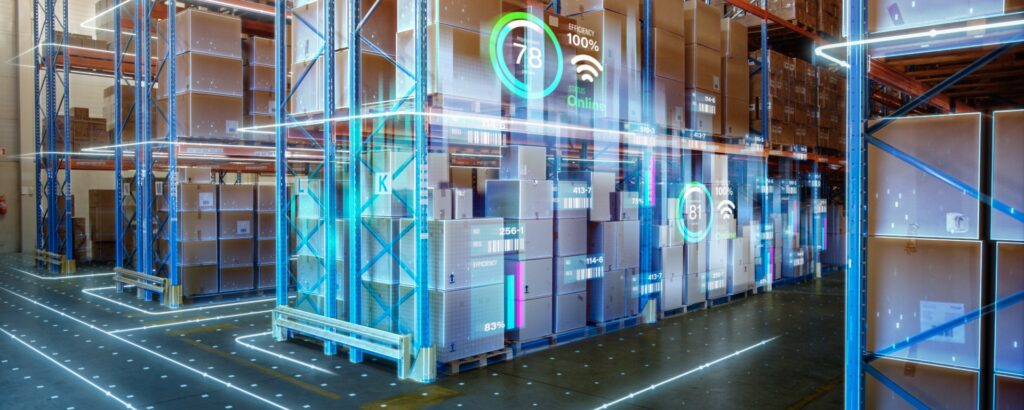Merchandise management system: theory and practice at a glance
Share this article
Tags
Categories

How you can make your online business more profitable with the right e-commerce merchandise management system - simply explained in the blog.
Merchandise management system explained simply: the what, why and how
Merchandise management system. That sounds really old-fashioned and boring. But if you sell more than just a handful of items per day with your store, which is very much to be hoped for, then you definitely need an inventory management system. Here you can find out exactly what it is, why you benefit from it and how to organize your merchandise management online.
What is a merchandise management system?
A merchandise management system facilitates the management of merchandise management. So far, so unclear.
However, before you dive into the explanation of an ERP system, it is first necessary to take a brief look at what ERP actually is.
This involves all tasks that need to be completed from procurement to sales. In other words: purchasing, storage and sales.
Or, to put it in even less theoretical terms: if customers want to buy product X in color Y and size Z in your store, structured and systematic merchandise management helps you to have it available. And that's where an e-commerce merchandise management system comes into play.
In theory, you can also solve this challenge with Excel spreadsheets, sticky notes on shelves and parcels and your memory. But once you reach a certain handling volume, it becomes confusing, with the corresponding negative consequences.
Problems such as losing customers due to supply bottlenecks and shortages or expensive excess stock at the end of the season are exactly what an inventory management system helps to avoid.
In summary, the definition of an enterprise resource planning system can be summarized as follows:
Incidentally, an enterprise resource planning system is not the same as ERP software. Although enterprise resource planning can include merchandise management, it goes far beyond this and also covers financial accounting (FiBu) or human resources, for example.
However, the boundaries between merchandise management systems and ERP are now blurred, especially when you consider the many additional features of merchandise management systems.
And another difference: while the cost of introducing ERP software is usually only worthwhile for larger companies, the situation is completely different with an ERP system. You can find out why this is the case below.
Why you need a merchandise management system, especially as an online retailer
It is still often thought that a merchandise management system in online retail is only for the big players. In fact, small and medium-sized enterprises (SMEs) in particular are well advised to do everything they can to organize their processes as efficiently and cost-effectively as possible in the highly competitive e-commerce sector.
Apart from the fact that it is only beneficial to keep an overview of merchandise management online at all times: On top of that, smooth ordering processes and next-day delivery have come to define customer expectations. That's why an inventory management system is essential for shaping the shopping experience in such a way that customer satisfaction is guaranteed. In the medium and long term, this simply saves you a lot of time and money - which, as we all know, is kind of the same thing.
Merchandise management system: tasks and structure
Of course, not all merchandise management systems are the same. The specific requirements differ from case to case, depending on whether you are pursuing a multi-channel approach, for example, or simply need a connection to your own online store.
But there are basics that no merchandise management system can do without if it wants to make work significantly easier for operators:
The basics
The fact that merchandise management with store systems such as Adobe Commerce (formerly Magento) or Shopware must be interlinked is clear. In addition, all merchandise management systems should have the range of functions shown in the following graphic.

Schematic overview of the basic components of a merchandise management system.
Every merchandise management system links these four central functions with each other and thus facilitates merchandise management in e-commerce.
What in particular must a merchandise management system for online retail be able to do in the individual functions?
- Purchasing: A merchandise management system provides structure for incoming goods by facilitating or even automatically completing tasks such as scheduling, supplier management and invoice control. Actions carried out automatically by the program, such as reordering in the event of impending supply bottlenecks, can also be helpful.
- Warehousing: Make optimum use of available space, generate stock lists and automatically keep the store up to date. A good merchandise management system does all of this. If something is out of stock, this is displayed immediately. This helps to avoid disappointed customers.
- Sale: Outgoing goods are organized, for example, by the merchandise management system automatically linking customer data to shipping, taking discount promotions into account and digitally recording all goods movements (provided they have been scanned beforehand). Efficient sales from picking to shipping will please both your customers (because they get what they want quickly) and you (because you save costs).
- Reporting: This refers, for example, to statistics on items that are selling well or slow sellers (best-seller lists) and other stock evaluations.
Direct communication with the online store is not available with every merchandise management system, but you should not do without this function. Unless you sell exclusively via Amazon, eBay & Co. In this case, a connection to these platforms must be ensured.
Additional features
There are now software solutions that cover areas that go more in the direction of ERP in addition to actual merchandise management. Such systems also include modules for CRM (Customer Relationship Management) and SRM (Supplier Relationship Management), for example.
Such extensions to a merchandise management system can make perfect sense. After all, customer relationship management is part of sales success and suppliers should also remain happy.
What should be a plus in almost all cases is the integration of accounting into the merchandise management system. This allows you to immediately post incoming payments, write invoices or reminders and ultimately make it easier for you to prepare the annual financial statements.
Merchandise management systems in practice
In theory, merchandise management systems make a large number of processes that regularly occur in e-commerce operations easier for you. But how do you make the step from theory to practice and how do you choose a suitable system for your online business? You can make the right choice by clarifying some specific aspects of your individual requirements.
What types of merchandise management systems are there?
If you would like to purchase an ERP system, it is helpful to get a structured overview of the wide range of software now available. Possible categories are, for example
- Degree of specialization: Is standard off-the-shelf software enough for you? Or do you need a solution tailored to your industry or even to your specific company (customized software)?
- Range of functions: Should only the core tasks of merchandise management be covered (closed merchandise management system)? Do you want to cover additional features or third-party applications that are connected via interfaces (open system)? Or integrate the ERP system with tax or financial accounting software, for example?
In practice, the type of software provision is at least as important. Apart from free open source offerings (which may well be an option depending on the case), a distinction must be made between programs installed on site (on-premise solution) and an ERP system in the cloud.
Both approaches have specific advantages and disadvantages, not least in terms of data control. Overall, however, the SaaS variant (Software as a Service) from the cloud is probably the best solution for most online retailers. Unless you are willing and able to invest in your own IT infrastructure and the corresponding personnel for operation and maintenance.
How much can a merchandise management system cost?
The costs of an ERP system cannot be quantified across the board, as they depend on the individual case. The spectrum ranges from free open source solutions and comparatively low monthly fees for an ERP system in the cloud to high initial and maintenance investments for on-premise solutions.
In any case, it should be borne in mind that online retail without a merchandise management system is likely to be the most expensive in the long term. After all, such a system automates numerous processes, which not only saves time but also personnel costs.
Selection and implementation of a merchandise management system
To choose the right software that will actually make your processes more efficient, you need to know: How do you make the right choice? What should you bear in mind when introducing an ERP system? What pitfalls should be avoided?
It also makes a difference whether you are setting up a new business or want to build a merchandise management system on top of an existing business.
The following list gives you an overview of decision criteria or key aspects that you should always keep in mind:
- Plan carefully: Choosing a merchandise management system is a strategic decision that simply has to be a perfect fit. After all, you don't want to have to change again after a while.
- Determine requirements in advance: Online stores are as individual as the people behind them. So determine from the outset what specific requirements you have for your merchandise management system for online retail. For example, whether you need a connection to external marketplaces or interfaces to accounting.
- Set priorities: No merchandise management system will be able to fully meet all your needs (unless you have one custom-made for a lot of money). Therefore, think about which functions are indispensable and concentrate on these.
- Thinking about the future: Your online store will change over time. As the business grows, the scalability of the merchandise management system is important. You may need additional functions in the future. It is then an advantage if your system can be expanded, for example through the uncomplicated integration of open source software.
Conclusion: A merchandise management system makes life easier and the tills fuller
In retail, everything revolves around customer satisfaction. And e-commerce achieves this first and foremost through speed and a flawless user experience. To achieve this, all goods movements must be managed efficiently. A suitable merchandise management system not only relieves you of a large part of this work, but also ensures that your order volumes continue to grow. It doesn't sound like the most attractive topic in theory, but in practice, investing in an online merchandise management system definitely pays off.
Further contributions
No contributions found.
